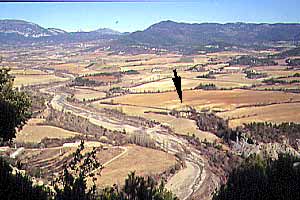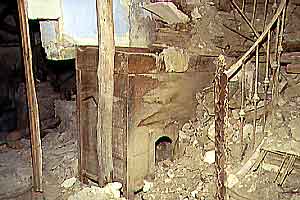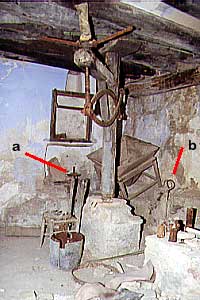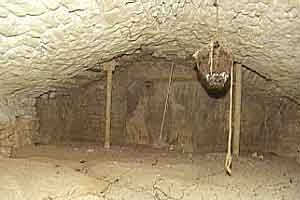Path: Introduction -
Visit the mills; catalogue - Palo

Mills in Alto Aragón — harinero
Palo

Palo's mill is situated
in the middle of the fields between Palo village and Humo de Muro
on the east-side of the Embalse del Mediano south of L'Ainsa. From Palo take the road towards Tierrantona. You'll first pass the branch leading to Santuario de Bruís and then reach a small bridge with a sand road starting just before it at your left hand. Walk this road and you will soon reach the mill. Unfortunately enough the building is in very bad shape. It's still a very impressive construction though.
Pictures: 31.XII.1996, 08.III.2005









